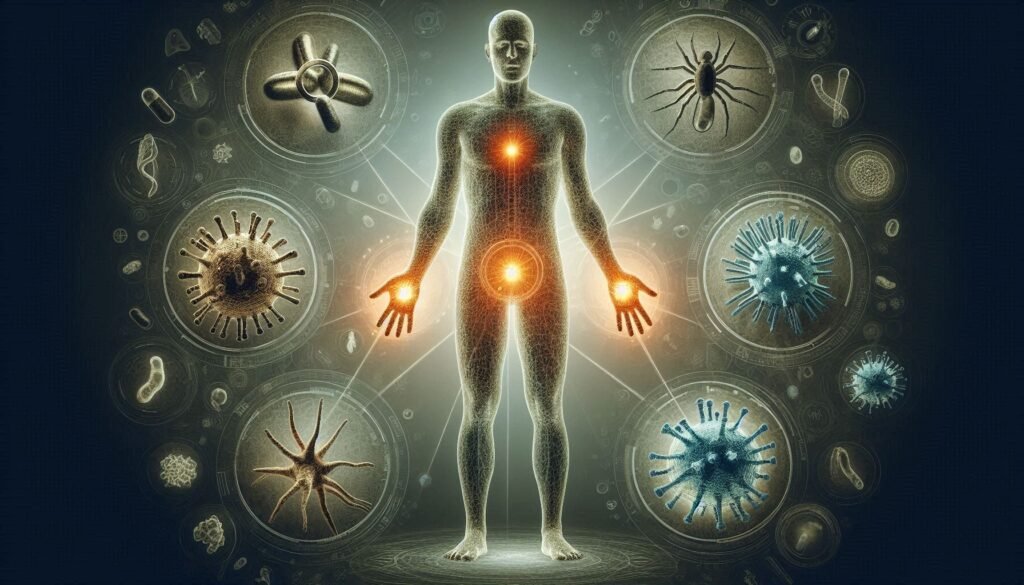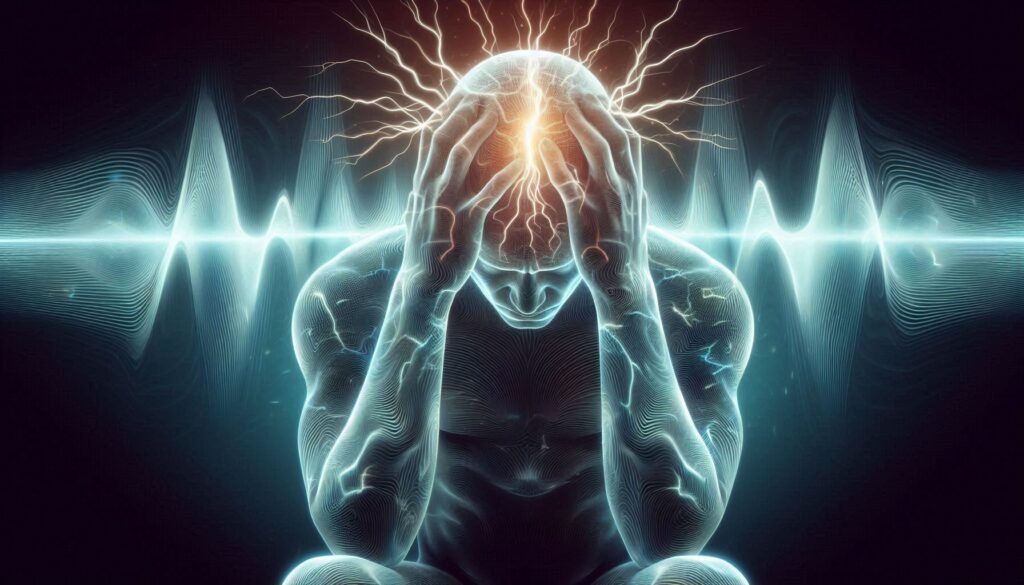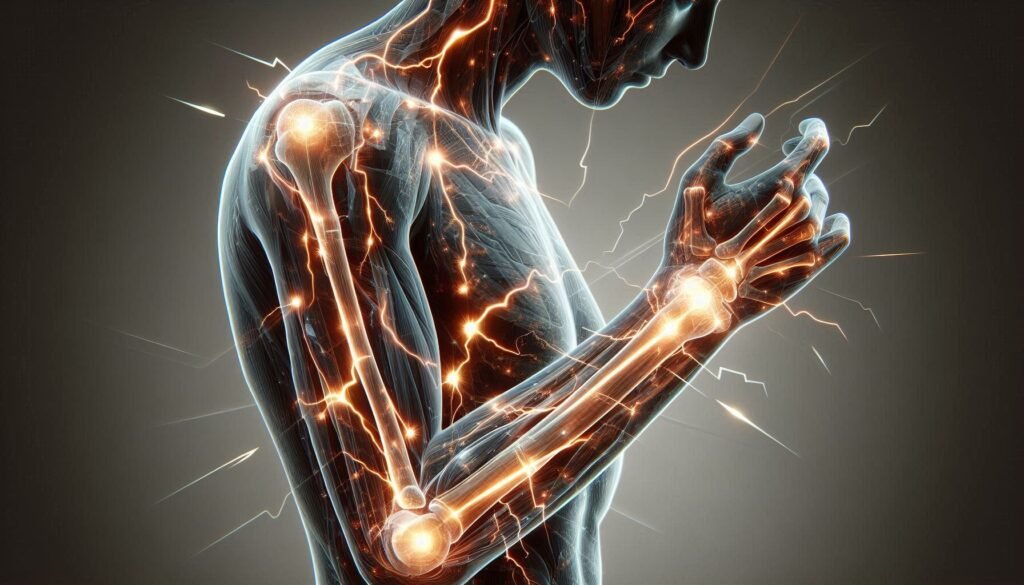Paresthesia symptoms, such as tingling or numbness in the extremities, can be startling and disconcerting. While many people associate this sensation with nerve damage or compression, there’s a lesser-known culprit: infectious diseases. These conditions can disrupt normal nervous system function and lead to unexpected neurological symptoms. Understanding how infections trigger paresthesia is crucial for early diagnosis and treatment.
Infectious diseases may arise from various pathogens—bacteria, viruses, parasites—and their impact on the body can extend beyond typical illness. From Lyme disease to HIV/AIDS and even leprosy, each infection carries its own unique implications for nerve health.
This article will explore several infectious diseases that may trigger paresthesia symptoms while shedding light on essential diagnostic methods and treatment approaches available today. Join us as we delve into this intriguing intersection of neurology and infectious pathology.

Understanding How Infections Affect the Nervous System
Infections can profoundly impact the nervous system, leading to various neurological symptoms, including paresthesia. Pathogens such as bacteria and viruses may invade nerve tissues or disrupt normal function, causing sensations of tingling, numbness, or even pain.
The body’s immune response often plays a significant role in these effects. When an infection occurs, the immune system activates inflammatory processes that can inadvertently harm nerve cells. This inflammation might compress nerves or alter their signaling pathways.
Additionally, some infections have a more direct effect on neural structures. For example, certain viruses target specific neurons and may lead to degeneration over time. Other pathogens could produce toxins that interfere with neurotransmitter release.
Understanding this complex interaction between infections and the nervous system is crucial for diagnosing conditions associated with paresthesia. Recognizing how different pathogens affect nerve health helps healthcare providers tailor effective treatment plans for affected individuals.
Lyme Disease: A Common Infectious Cause of Paresthesia
Lyme disease is a tick-borne illness caused by the bacterium Borrelia burgdorferi. It primarily affects the skin, joints, heart, and nervous system. One of the lesser-known symptoms associated with Lyme disease is paresthesia. This condition may manifest as tingling or numbness in various body parts.
In its early stages, Lyme disease often presents with a characteristic rash known as erythema migrans. As it progresses without treatment, neurological complications can arise. These complications include meningitis and radiculopathy, both of which can lead to abnormal sensations like paresthesia.
The timing of symptoms varies among individuals. Some people may experience paresthesia shortly after infection while others might develop these sensations long after the initial signs appear. The unpredictability adds to the complexity of diagnosing and managing Lyme disease effectively.
Prompt antibiotic treatment is crucial for preventing chronic conditions related to Lyme disease. Awareness of this connection between infections and nerve function is vital for timely intervention.
HIV/AIDS and Its Neurological Complications
HIV/AIDS is well-known for its impact on the immune system, but it also significantly affects the nervous system. Neurological complications can arise at any stage of HIV infection, often leading to a range of symptoms that include paresthesia. These sensations can manifest as tingling or numbness in various body parts.
In advanced stages, individuals may experience conditions like HIV-associated neurocognitive disorders (HAND). This condition ranges from mild cognitive impairment to severe dementia. The virus directly invades brain cells and alters their function, causing neurological deficits.
Peripheral neuropathy is another common complication related to HIV. It usually results from the virus itself or as a side effect of antiretroviral therapy. Symptoms can vary widely and lead to discomfort in daily activities.
Regular monitoring and timely intervention are crucial for managing these neurological issues effectively. Addressing both physical health and mental well-being plays an important role in improving quality of life for individuals living with HIV/AIDS.
Herpes Zoster (Shingles): Viral Cause of Localized Paresthesia
Herpes Zoster, commonly known as shingles, is caused by the reactivation of the varicella-zoster virus. This virus initially infects individuals during childhood, presenting as chickenpox. After recovery, it can lie dormant in nerve tissues and reactivate years later, leading to shingles.
One of the hallmark symptoms of herpes zoster is localized paresthesia. Patients often report tingling or burning sensations in specific areas before a rash appears. This occurs due to inflammation affecting sensory nerves associated with the affected skin region.
The rash typically emerges as painful blisters that follow a dermatomal pattern—meaning they affect only one side of the body or face. These symptoms are often accompanied by significant discomfort and sensitivity in the affected area.
Understanding how herpes zoster triggers these neurological symptoms highlights its impact on quality of life for those infected. Early recognition and treatment are key to managing both pain and potential complications related to this viral infection.
Guillain-Barré Syndrome: Post-Infectious Autoimmune Neuropathy
Guillain-Barré Syndrome (GBS) is a rare but serious condition that often follows an infection. This autoimmune disorder occurs when the body’s immune system mistakenly attacks peripheral nerves, leading to inflammation and damage. The exact trigger can vary, with many cases linked to viral or bacterial infections.
Symptoms of GBS typically begin with weakness and tingling sensations in the legs, which may progress rapidly. In severe cases, it can lead to paralysis and respiratory difficulties. Early diagnosis is crucial for effective management of this syndrome.
Infections such as Campylobacter jejuni—a bacterium responsible for food poisoning—are commonly associated with GBS onset. Other infectious agents like cytomegalovirus (CMV), Epstein-Barr virus (EBV), and Zika virus have also been implicated.
Treatment usually involves immunotherapy methods like intravenous immunoglobulin (IVIG) or plasmapheresis to help reduce nerve inflammation. Prompt medical attention can significantly improve recovery outcomes for those affected by Guillain-Barré Syndrome.
Leprosy: An Ancient Disease with Modern Neurological Implications
Leprosy, or Hansen’s disease, is caused by the bacterium Mycobacterium leprae. This ancient condition has plagued humanity for centuries, often resulting in significant stigma and misunderstanding. Despite advances in medicine, leprosy continues to affect thousands of people worldwide.
One of the lesser-known aspects of leprosy is its impact on the nervous system. The bacteria primarily target peripheral nerves, leading to nerve damage and loss of sensation. This can result in symptoms such as paresthesia—tingling sensations that can be uncomfortable or alarming.
Patients with untreated leprosy may experience muscle weakness and deformities due to prolonged nerve impairment. These complications stem from both direct bacterial infection and subsequent immune responses that further harm nerve tissues.
Modern treatment options have significantly improved outcomes for those diagnosed with leprosy. Early detection and multidrug therapy are crucial in minimizing neurological damage and preventing long-term disability associated with this ancient disease.
Parasitic Infections and Their Impact on Nerve Function
Parasitic infections can significantly disrupt the nervous system, leading to symptoms like paresthesia. Parasites such as Toxoplasma gondii and Schistosoma mansoni have been associated with neurological complications. These organisms invade the host’s body and can affect nerve tissues directly or indirectly through inflammatory responses.
Toxoplasmosis often remains asymptomatic but can lead to severe outcomes in immunocompromised individuals, including those with neurological involvement. Patients may experience altered sensations or tingling due to nerve irritation caused by the parasite.
Schistosomiasis is another parasitic disease that affects millions worldwide. The adult worms reside in blood vessels, releasing eggs that provoke inflammation and fibrosis, which can compress nearby nerves and result in neuropathic pain or sensory disturbances.
Other parasites like Strongyloides stercoralis may also contribute to neurological issues through autoimmune mechanisms triggered by infection. Understanding these connections helps healthcare providers offer better diagnostic and treatment options for affected patients.
Meningitis and Encephalitis: Central Nervous System Infections
Meningitis and encephalitis are serious infections affecting the central nervous system. Meningitis involves inflammation of the protective membranes surrounding the brain and spinal cord, while encephalitis refers to inflammation of the brain itself. Both conditions can lead to severe neurological symptoms, including paresthesia.
The causes of these infections range from viral and bacterial agents to fungi. Bacterial meningitis is particularly dangerous, as it can progress rapidly and lead to life-threatening complications. Viral forms are more common but usually less severe.
Symptoms may include fever, headache, stiff neck, and altered mental status. In many cases, patients also report tingling or numbness in various parts of their bodies due to nerve irritation or damage caused by the infection’s inflammatory response.
Timely diagnosis is critical for effective treatment. Health professionals often use lumbar punctures along with imaging studies to identify the causative agent and assess its impact on neural function.
Diagnosing Infection-Related Paresthesia: Tests and Procedures
Diagnosing infection-related paresthesia involves a thorough evaluation by healthcare professionals. The process often begins with a detailed medical history and physical examination. Doctors assess symptoms, duration, and any recent infections that may contribute to nerve issues.
Blood tests are commonly performed to identify underlying infections. These tests can detect markers for various pathogens like viruses or bacteria that could cause neurological effects. Imaging studies, such as MRI or CT scans, might also be necessary to visualize any structural changes in the nervous system.
Electrophysiological studies play an essential role in assessing nerve function. Nerve conduction studies (NCS) measure how quickly electrical signals travel through nerves. This helps determine if there’s damage due to infection-related factors.
In some cases, lumbar puncture may be needed for cerebrospinal fluid analysis. This procedure aids in diagnosing central nervous system infections like meningitis or encephalitis by identifying specific pathogens present in the fluid surrounding the brain and spinal cord.
Treatment Approaches: Addressing Both Infection and Neurological Symptoms
When it comes to treating paresthesia related to infectious diseases, a multifaceted approach is essential. The primary focus must be on managing the underlying infection first. This often involves antibiotics for bacterial infections like Lyme disease or antiviral medications for viral causes such as herpes zoster.
Once the infection is under control, attention shifts to alleviating neurological symptoms. Physicians may recommend physical therapy aimed at improving mobility and function. Pain management strategies are also critical; options include over-the-counter pain relievers, prescription medications, or even nerve blocks depending on severity.
For autoimmune responses triggered by infections—such as Guillain-Barré syndrome—immunotherapy might be necessary. Treatments may involve immunoglobulin therapy or plasmapheresis to reduce inflammation and ease symptoms.
Regular follow-ups with healthcare providers ensure that patients receive ongoing support tailored to their specific situations. Engaging in healthy lifestyle choices can further boost recovery and improve overall neurological health.
Addressing both the infection itself and its neurological consequences ultimately leads to better outcomes for those experiencing paresthesia linked with infectious diseases. Staying informed about treatment options empowers individuals facing these challenges while fostering hope for long-term improvement in their quality of life.


